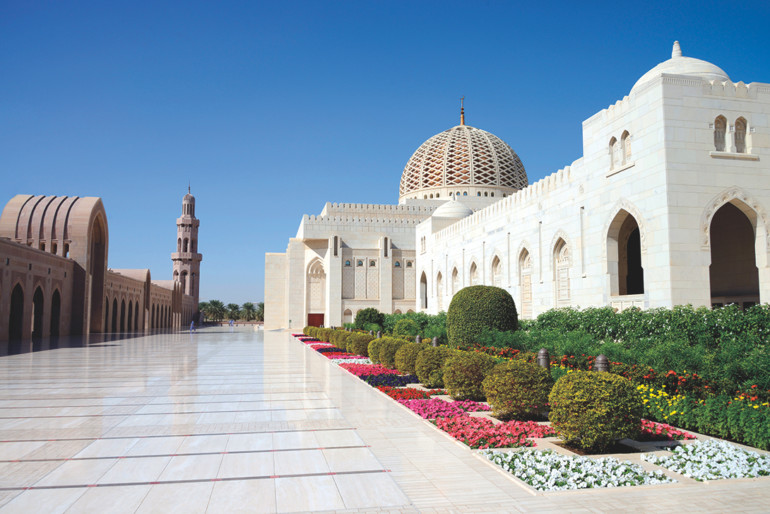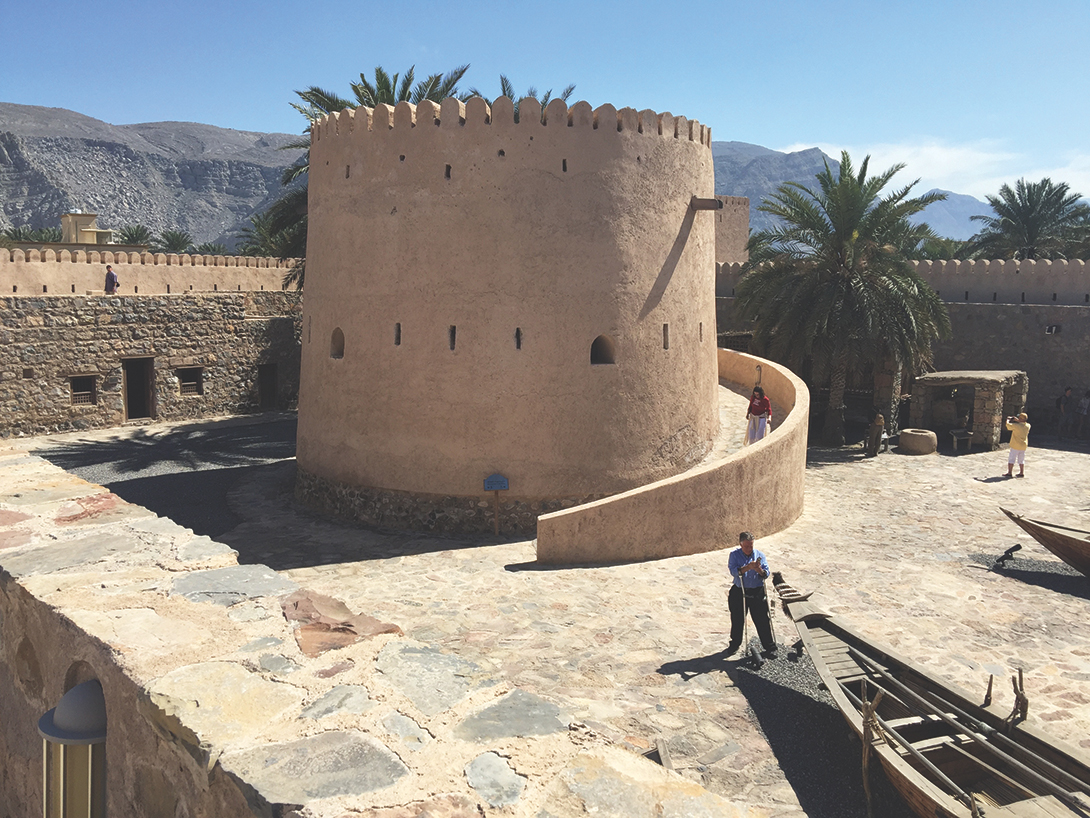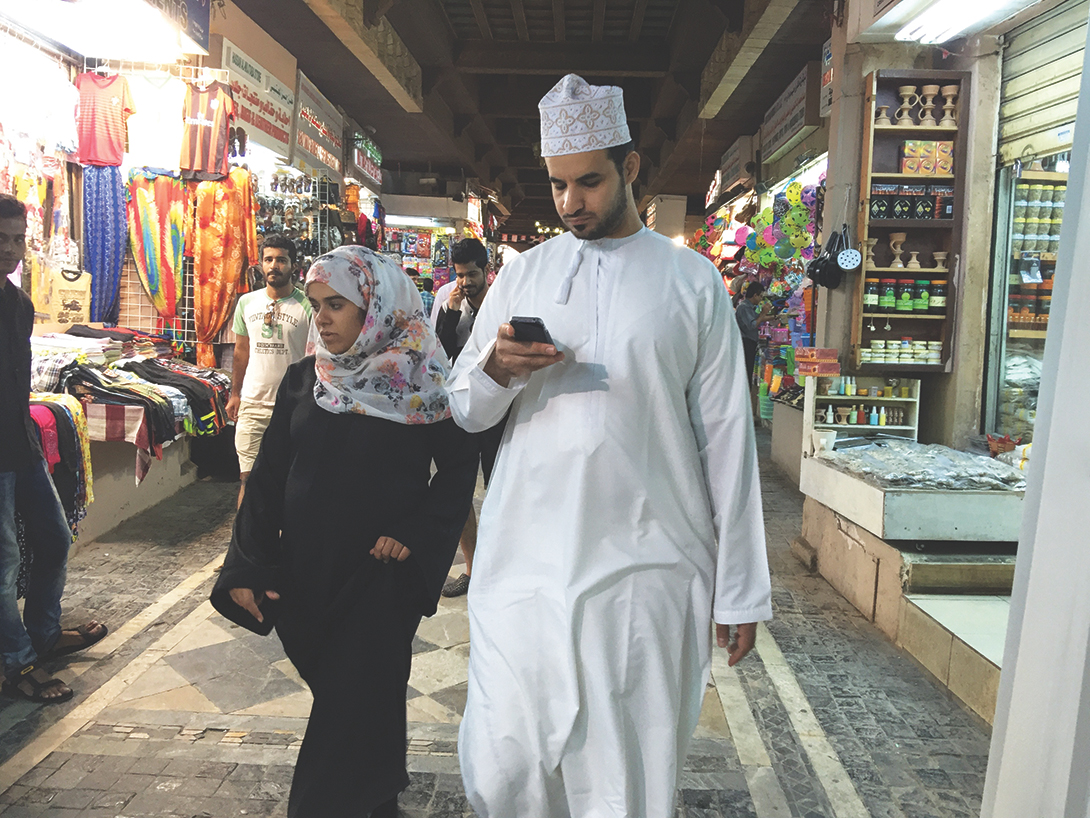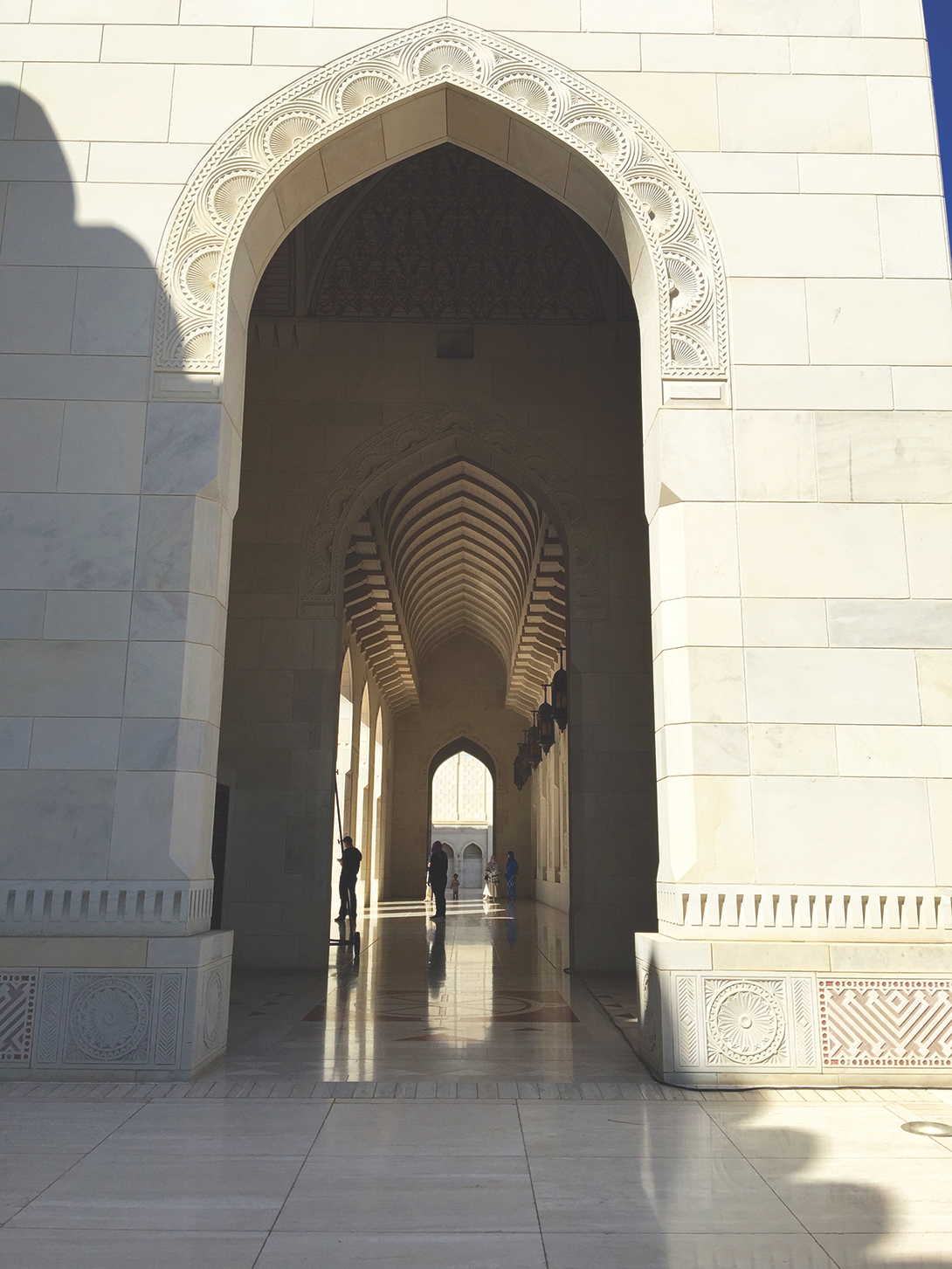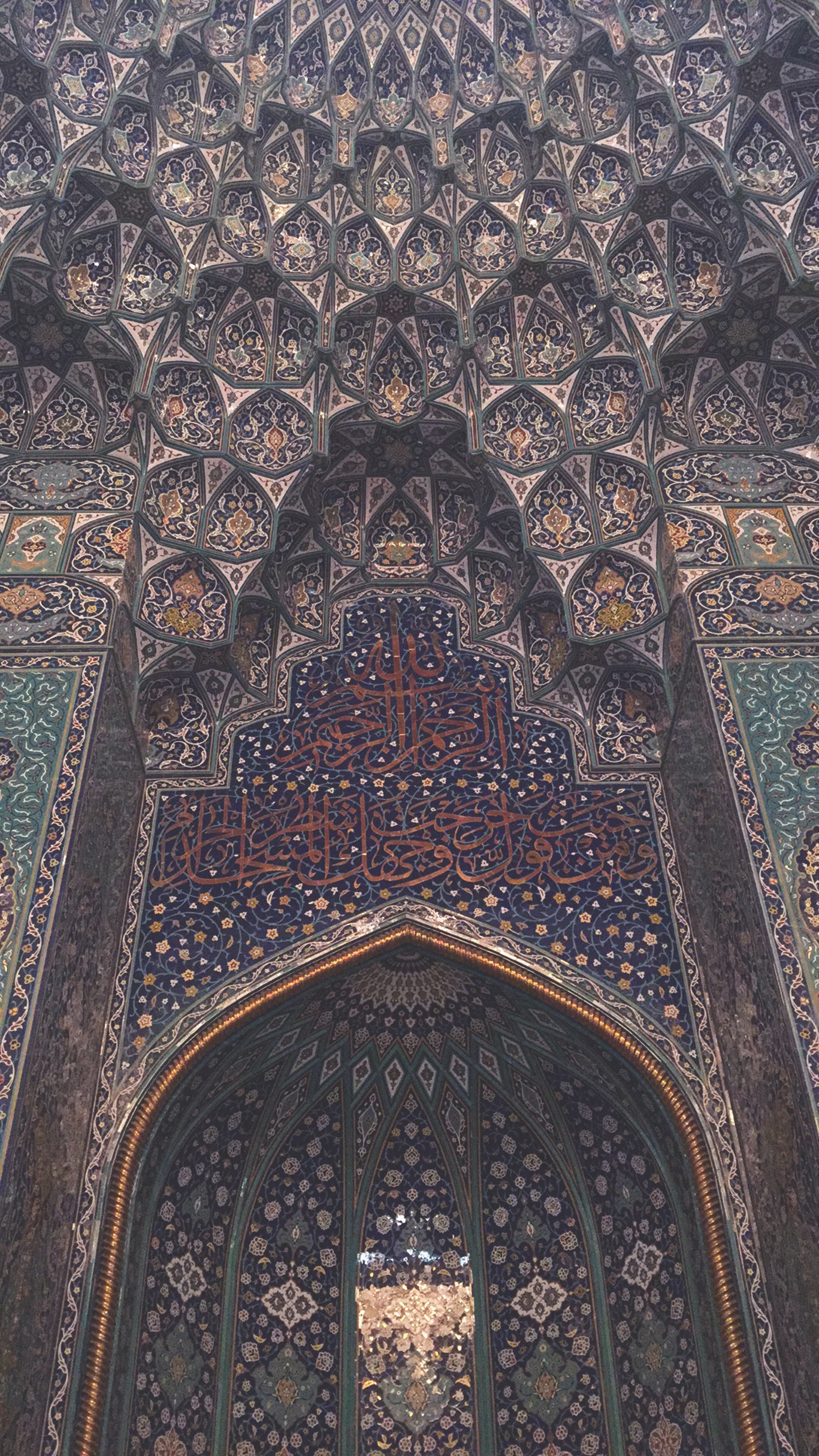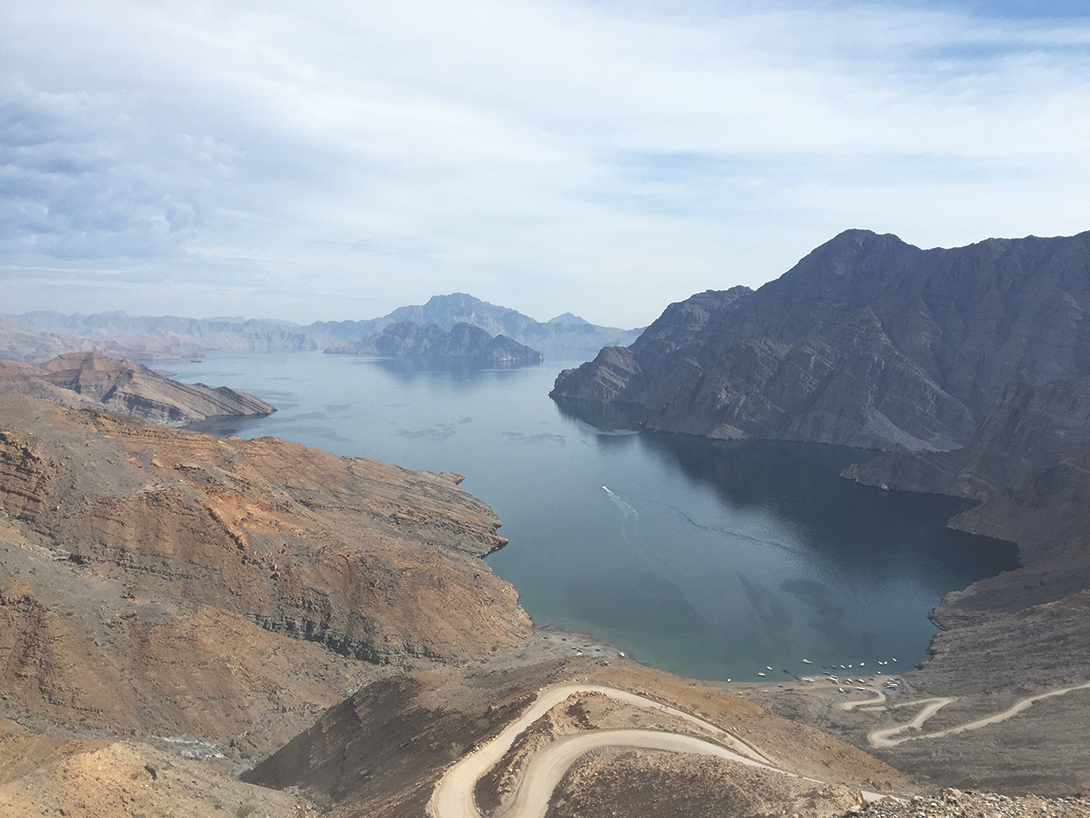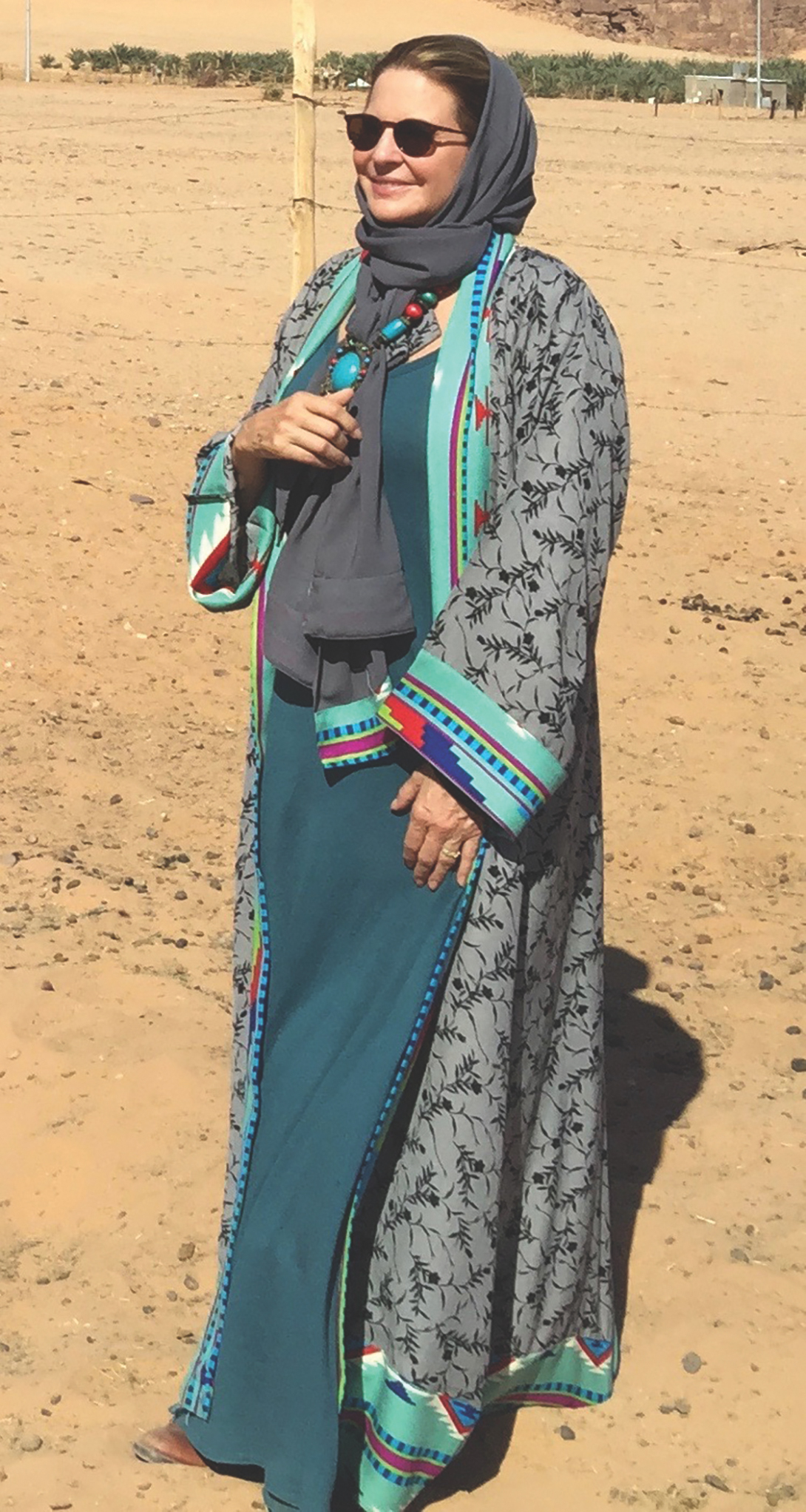AS AN 8-YEAR-OLD in 1963, I was taken to see Lawrence of Arabia and was enthralled by the endless desert, the horses, the flowing robes, the passion, the pageantry, the mystery and the romance of it all — I felt somehow connected to the Arabian Peninsula.
Later, as a teenager, I read about Gertrude Bell, the remarkable writer, photographer, archaeologist and, from World War I until her death in 1926, the only Englishwoman to influence British imperial policy in the Middle East. Her life was passionate, her admirers were many and she was the very definition of “a woman in a man’s world.” Of course, I wanted to grow up to be her.
The images from that film lingered in my mind. Whenever I think about places I’d like to go — Bhutan, the Seychelles, Tierra del Fuego — the Arabian Peninsula always finds a way to the top of the list.
Now I get to go there. Often. A few years ago, I began working for Jon Huntsman at the Huntsman Cancer Foundation in Salt Lake City. The Huntsman Cancer Institute, the largest genetic research hospital in the world, has discovered more cancer genes than any other hospital in the world. I was sent to the Gulf to forge alliances for the institute. I was also invited to join the board of the National Council on U.S.-Arab Relations in Washington, D.C.
Last year, NCUSAR asked me to co-escort a delegation of high-ranking American military leaders to the country of Oman. The purpose: understand Oman. I’d never been there. Of all the people going on that trip, I wanted that understanding most.
Friendly Folks
Arriving in the Sultanate of Oman, you feel as if you are in a landscape painting; it is orderly and vast and visually breathtaking. Visitors often compare it to Disneyland with its controlled, well-organized and meticulously maintained public grounds. The people are friendly, happy, helpful and tolerant. There is no litter, no vagrancy, no graffiti, no terrorism, no violence, and no radicalism. There are really no unsafe areas.
Oman is not large — it’s about the size of Kansas — but it has immense geopolitical importance, as it overlooks the Arabian Sea, the Sea of Oman and the Arabian Gulf. It also overlooks the Strait of Hormuz, which links the latter two water bodies; it’s a gateway for all ships coming from the Indian Ocean and the Arabian Sea. Thirty percent of the world’s oil passes through this strait.
One reason for Oman’s stability is its insularity. It has natural boundaries that shelter it: mountains, deserts, and the sea. Yemen, to the south, has been mired in conflict for five years; across the Gulf of Oman are endlessly troubled Afghanistan and nuclear-enabled Pakistan. To the north of Saudi Arabia and the Gulf lies Iraq, aflame for 13 years and entangled in endless civil war. Egypt is passing back into military rule. The death toll in Syria is approaching half a million. Across the region, the devastation of the Middle East is heartbreaking. In stark contrast, there is the miraculous peace and blue skies of Oman: orderly, calm with a spectacular landscape, terrain and beaches.
Oman’s insularity is buttressed by political neutrality — its diplomatic policy has been characterized as “friend to all, enemy to none.” Also, as an absolute monarchy, Oman has no legal political parties. Its leader is Sultan Qaboos, who assumed the throne in 1970 in a palace coup, replacing his father, Sultan Said bin Taymur, an isolationist so fearful of foreign influences that he even banned sunglasses. During his reign, private cars were illegal. Oman had three schools, one hospital, about six miles of paved roads, and no newspapers. Only royals were allowed to be educated. Sultan Qaboos assumed control of a severely underdeveloped society.
He was privately educated in Salalah, the capital city of southern Oman’s Dhofar province, before attending the Royal Military Academy Sandhurst in the U.K. And Sultan Qaboos’ progressive training proved crucial as he began a delicate mission: developing Oman using its oil wealth, but keeping its traditions and culture intact. He’s largely succeeded. Women participate in Oman’s cultural and civic life. With free education and the right to vote, they may hold public office, own property and work alongside men in both public and private sectors. The World Health Organization recently ranked Oman’s population the healthiest in the world and its health system among the 10 best.
Architectural Beauty
I’ve never seen such well-planned urban development. Many of the buildings are 46 years young; they’re well thought out in placement and access. Architectural details are carefully mandated here. You don’t find the high-rises that create a Western-looking skyline in neighboring countries. Most new buildings are a medley of arches and graceful lines. Even the street lamps in the cities and on the highways are lyrically beautiful in their repetitive form. There is something calming and reassuring about this consistent elegance. That’s not an accident. The sultan has decreed that owners have a choice of five colors ranging from white to beige to paint their buildings and houses. The average home is two stories high. The average public building is five to six stories tall. Even the country’s signage is controlled, and the water tanks atop many houses and buildings must be obscured from public view by any of three approved stylistically sensitive enclosures, all of which are white.
The dwellings that date from the pre–air-conditioning era have outer stairways that lead to flat roofs where sleepers can catch what little cool breeze there is in the hot and humid four-to-five-month summer season. Many have lovely walled-in gardens. The gates into the gardens are often spectacular, whether they are the traditional wooden hand-carved designs from Zanzibar or newer, modern-looking metal ones. Both new and old are likely to boast understated calligraphic motifs that convey an image of modesty, a reflection of the predominantly Muslim beliefs. Behind these gates are gardens of roses, apricots, and pomegranates, watered by the centuries-old falaj irrigation system of communal channels (aflaj) designed to minimize evaporation.
The domes and minarets on the mosques are likewise striking. The royal color is lavender, but pale and bright green, royal blue, peacock blue and vibrant gold are also used. In keeping with a decree by the sultan, the dome and the minarets on a building must always be the same color. Green is revered, as it has been associated with Islam and serves as a symbol of the religion itself. In the Gulf, blue is considered a protective color. White, symbolizing purity and peace, is also associated with Islam.
Flowers and Fashion
The flowers that bloom along the roadways are breathtaking, carefully chosen for color. Hundreds of thousands of petunias — lavender, white, pink and purple — have been tenderly planted and are weeded and nurtured to form a mass of orderly color. They often seem to bounce off the blueness of the sky and the café au lait color of the desert. Every detail has been considered and executed thoughtfully.
Fashion choices are limited. Men with khanjars (daggers) around their waists move in their dishdashas, the national male attire. These ankle-length, collarless gowns have long sleeves and a distinctive thin tassel not seen on the traditional robes of all other Arab countries. The khanjar is a symbol of male national identity.
In public, most women wear an abaya, a modest black dress or cloak over the clothes, and the hijab, the typical Muslim hair covering. At home, the Omani woman sometimes wears a long dress with ankle-length pants and a leeso, or scarf, covering her hair and neck. Lively-colored, loose-fitting tunics called jalabiyyas are also worn at home.
For all that uniformity, when tumult gripped the region with the Arab Spring in 2011, Sultan Qaboos responded creatively. According to Al Monitor, a Gulf newsletter, the sultan “ordered the government to create 50,000 jobs and pay every job-seeker $386 each month.” Not a bad rate considering there is no income tax in Oman.
See the Country
Oman is one of the cleanest countries in the world. When driving along the highway or side streets you can occasionally see a Vespa or small motorcycle with two large sacks. The driver retrieves litter — it’s his sole purpose. Oh, and if your car is dirty in Muscat you will get a ticket.
Controlled change has transformed Oman. Its infrastructure is stellar, including approximately 18,000 miles of paved road, excellent transportation, more than 1,500 schools, and over 250 hospitals and medical centers. International hotel chains have opened properties that embody Arabian hospitality.
The summers are blisteringly hot, so winters are the best time to visit Oman. Start in Muscat, considered the capital of Arab tourism and ranked second only to London by several travel guides. There are hundreds of forts, castles, and towers, some dating back to the 13th century, a time of fierce invasions and tribal rivalries. In the souks of Mutrah, Nizwa, Rustaq, and Salalah, trading is a way of life. You can take a pulse of an Omani town by exploring its souks, or covered markets, where you will find stalls filled with incense, produce, spices, and antiques.
There is scenic hiking in Oman’s version of the Grand Canyon in the Wadi Ghul Mountains. You can take a traditional Omani boat called a dhow and sleep on board. Or drive into the 5,000 square miles of Wahiba Sands, stay in a Bedouin camp and in the morning join a caravan of camels to travel deep into the desert. Thanks to four-wheel-drive vehicles, you can see camels in their natural habitat without having to ride one to get there. For those who prefer a beach vacation, Oman’s coastline measures 1,922 miles with an abundance of nearby wildlife, including whales, dolphins, turtles, sea horses and flamingos.
In this part of the world, progress can be painfully slow and fundamentalism still prevails. And yet the United Nations Economic and Social Council, during an annual review published in November, announced that the Sultan of Oman was the best leader in the world. It’s not a sentence that you expect to read in a piece about the Arabian Peninsula, but then Oman isn’t like other places.
If You Go
Tours
Badar Al Yazeedi
Panorama Tours
Muscat, Oman
P.O. Box 1467, Muscat 112
panorama.co.om
Where to Stay
Atana Khasab Hotel
Khasab Coastal Rd., Khasab
011-968-26-730-777
atanahotels.com
Perched on a rocky cliff overlooking the Strait of Hormuz. Each room has a private balcony. Rooms from $175.
Safari Desert Camp
Wahiba Sands
011-968-92-000-592
safaridesert.com
Huts and tents on a desert plateau. Buffet dinner and breakfast included, transportation and camel rides extra. Tents from $130.
Sahab Hotel
Saiq Plateau, Jebel Akhdar
011-968-25-429-288
sahab-hotel.com
Soak in an infinity pool and hot tub at 6,500 feet amid marine fossils dating to 270 million years ago. Studios from $161.
What to Do
Dolphin Khasab Tours
011-968-99-566-672
dolphinkhasabtours.com
Full- or half-day dhow cruises of the fjords of the Musandam Peninsula. Overnight trips are available on request.
omantourism.gov.om
This article originally appeared in Marin Magazine’s print edition with the headline: “Oman”.

